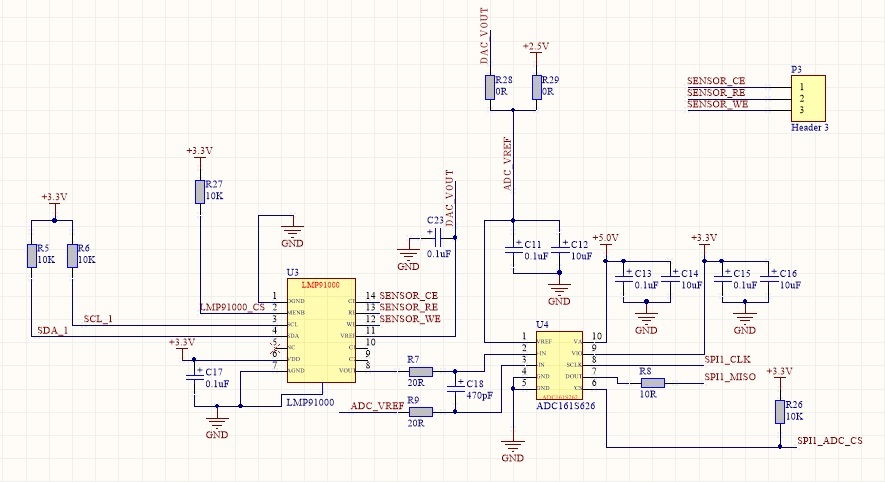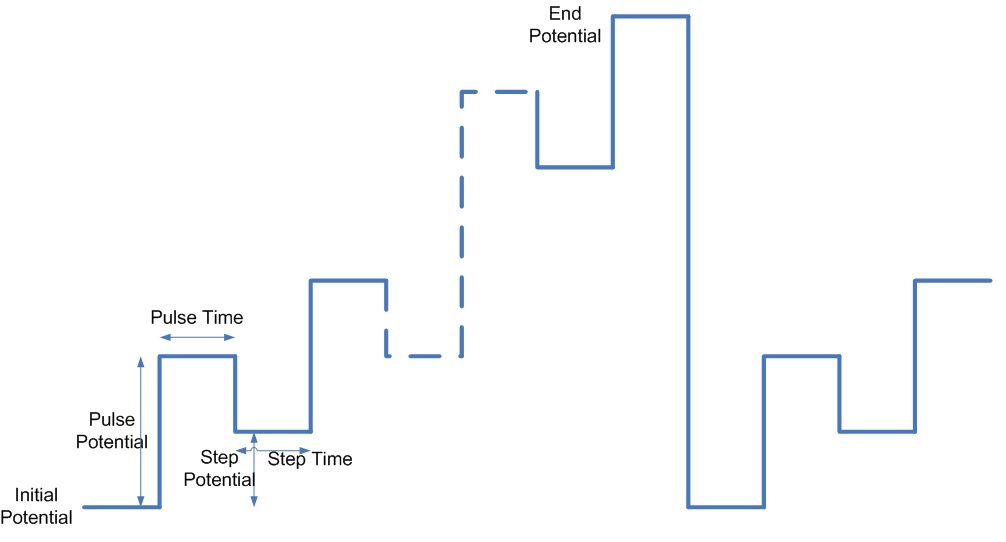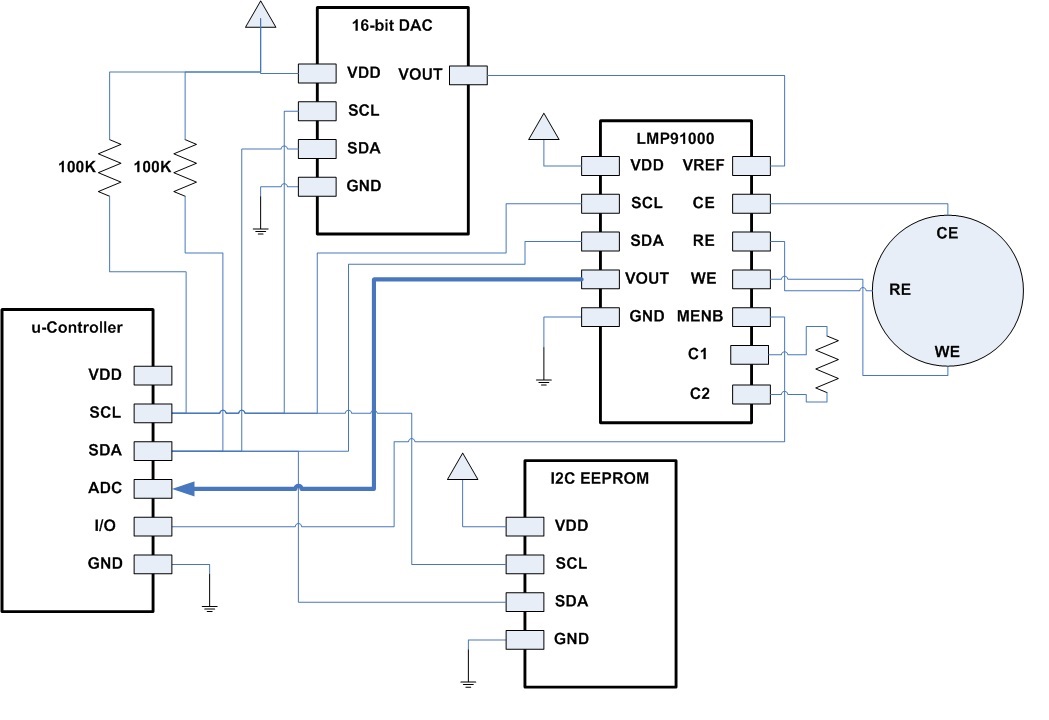Hi Support,
Customer has a problem in that the output voltage has no changes according to the BIAS register they have set. I2C function OK.
The procedure of testing as follow:
- I2C checking LMP91000 available to communicate. (I2C address 0x00)
- I2C configured LMP91000 setting and turn IC.
- I2C address 0x01 - unlock setting register
- I2C address 0x10 - set TIACN
- I2C address 0x11 - set REFCN
- I2C address 0x12 - set MODECN
Tried settings:
TIA_GAIN = 2.75KOhm, 3.5KOhm, 7KOhm, 14KOhm, 35KOhm, 120KOhm, 350KOhm.
RLOAD = 10Ohm, 33Ohm, 50Ohm, 100Ohm.
REF_SOURCE = External, we are using external Vref as an input
INT_Z = 20%, 50%, 67%
BIAS_SIGN & BIAS will change accordingly to our desire voltage.
According to Dr. formula (LMP setting excel sheet), we are expected to get 15mV from LMP91000 Vout when Vref is 1.5V and BIAS configured to 1%. Unfortunately, the result after testing is far from the expected value.
Attached the schematic and settings files.
Thanks.






